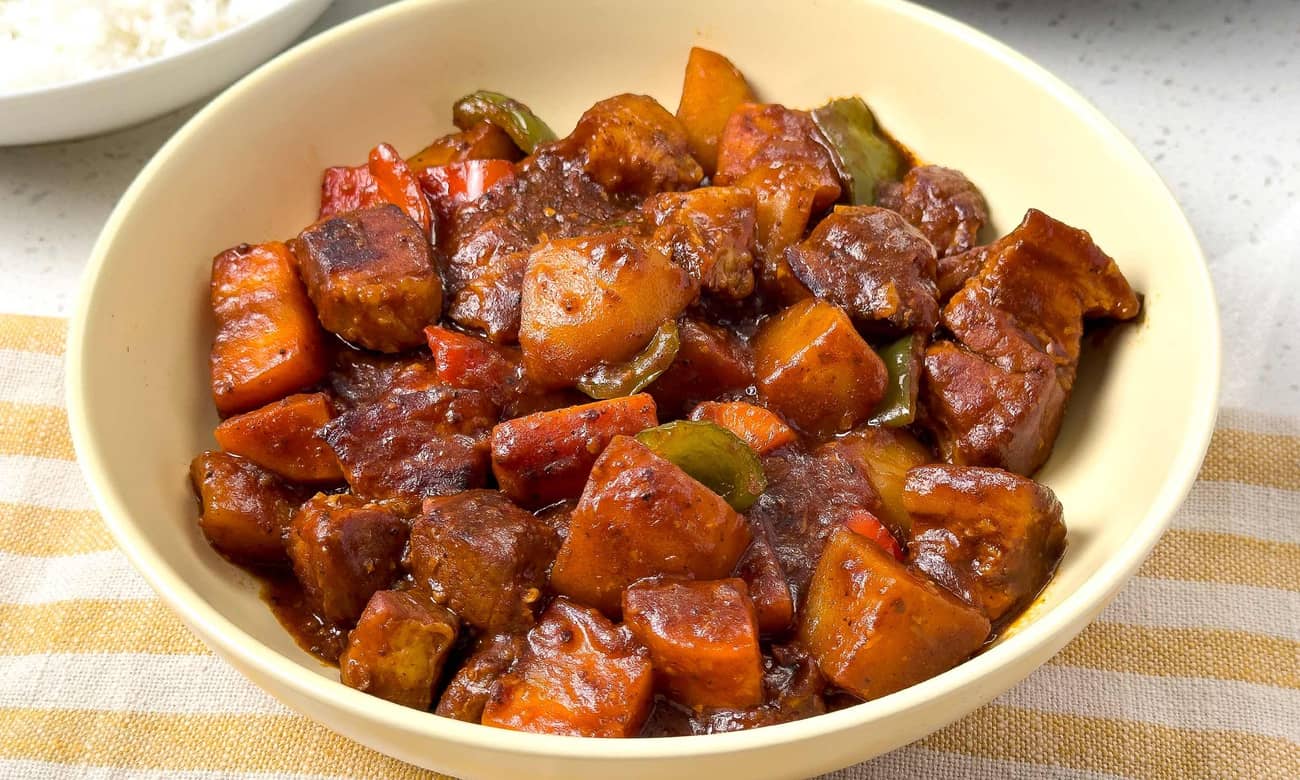
Our best pork sinigang recipe gives you an old-school sour soup made with sampalok.
As much as we love the convenience of instant sinigang mix, nothing beats old-school sinigang made with sampalok, or tamarind. Like drinking fresh orange juice after a lifetime of powdered stuff, sampalok-soured broth has a brighter, fresher tartness with citrus-like notes. For the pork, we use two cuts: ribs for porky flavor, and belly for richness.

Sinigang is a beloved Filipino dish of meat or fish cooked in a sour broth. Traditionally, the broth gets its acidity from sour-tasting fruit or leaves like kamias, sampalok, calamansi, and dayap. Nowadays, most home cooks use instant sinigang mix for convenience. Sinigang is served with hot rice, sometimes with bagoong and grilled meat or fish.
Boil sampalok: Add water and sampalok to a large pot over high heat. Bring to a boil until sampalok turns soft, about 30 minutes. Remove from heat and strain the sampalok, saving the water. Once sampalok is cool enough to handle, remove as much peel as possible.
Mash and strain sampalok: Mash tamarind pulp with a fork until smooth. Pass the pulp through a fine mesh strainer or cheesecloth, then add the liquid to the tamarind broth. Repeat until liquid has been fully extracted from the pulp.
Cook aromatics and pork: Add oil to a large pot over medium-high heat. Cook tomatoes, red onion, and garlic until softened. Add 8 cups of tamarind broth and stir. Season with salt as needed. Once liquid is boiling, reduce heat to medium-low and add pork. Cook until fork-tender, about 45 minutes to 1 hour.
Cook vegetables: Add vegetables in stages to prevent overcooking. Start with chilies to infuse the broth, then go from hard to soft, leafy vegetables: radish, eggplant, sitaw, and kangkong. Season with salt to taste.
Serve: Transfer sinigang to a bowl. Serve hot with patis and steamed rice on the side.
You can puree the sampalok pulp with a blender or food processor.
Besides sampalok (tamarind), traditional sinigang recipes use sour fruits and leaves like kamias, guava, tomatoes, green pineapple, green mango, calamansi, and dayap.
And while it seems like an obvious choice, vinegar is never used as a souring agent for sinigang!
Tamarind paste produces a rich, dark broth that we would've liked, but it has a slight bitterness that can be off-putting. If you're not using sampalok, go for the instant sinigang mix.
Yes you can! Use beef short ribs instead of pork. Adjust the cooking time until beef is fork-tender by adding 1 hour at a time.
Of course! What vegetables you use is less important than the order you cook them. Always add the harder, longer-cooking veggies first (ex. taro, radish), then finish with fast-cooking leafy greens (ex. kangkong, bok choy).
